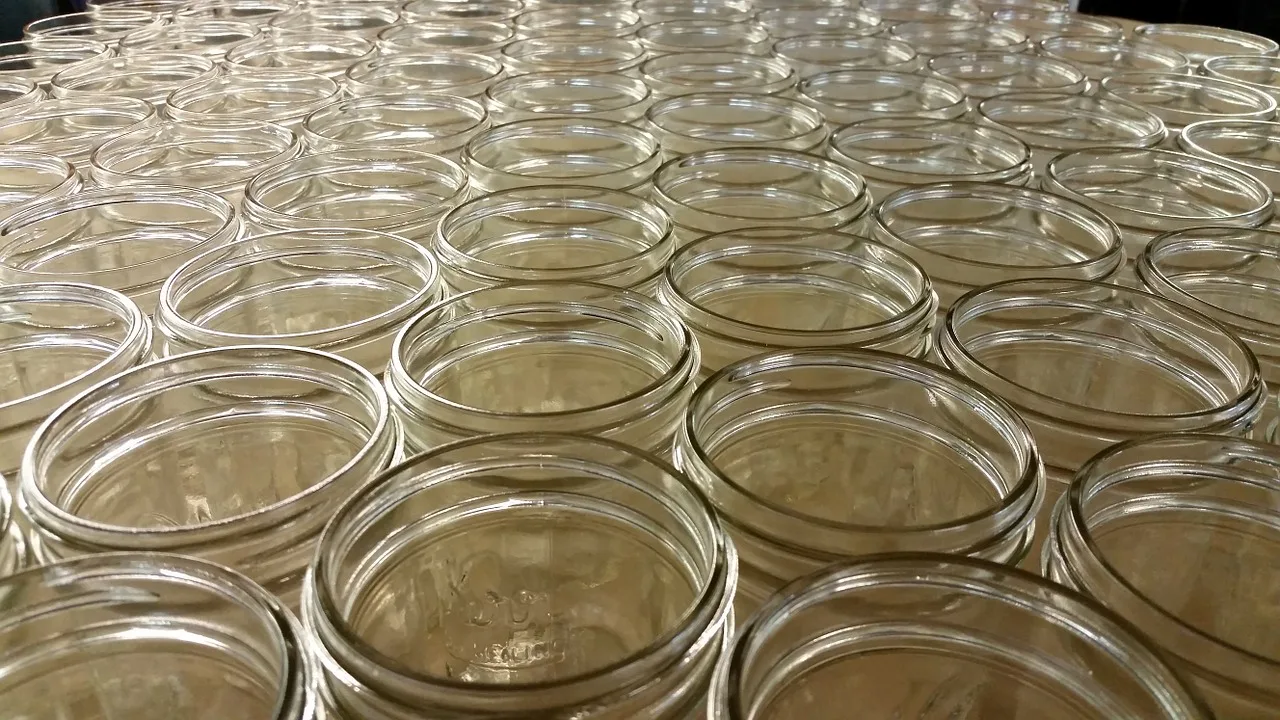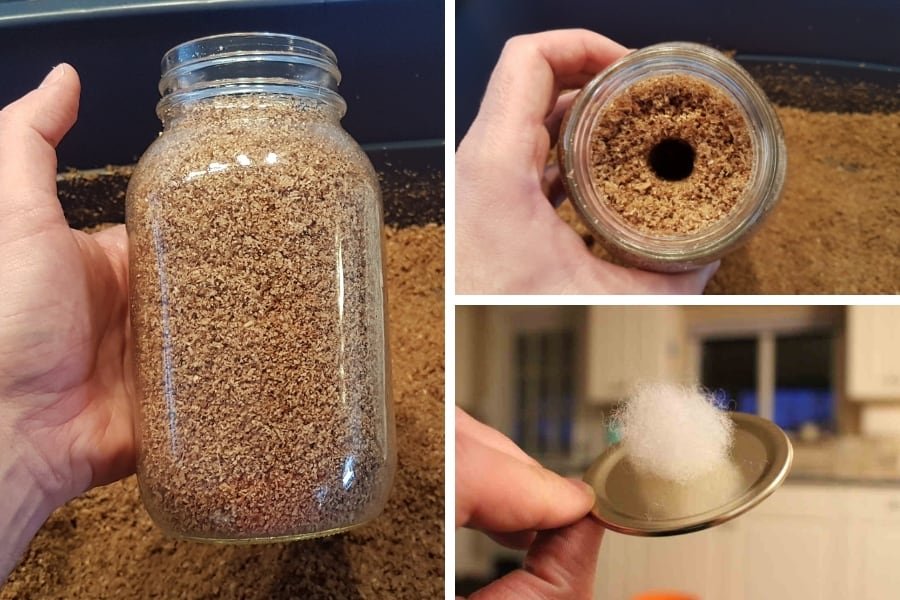To grow mushrooms in bottles, inoculate sterilized substrate in the bottles with mushroom spores or mycelium, maintain appropriate temperature and humidity, and provide indirect light to encourage growth.
Bottle Up Your Garden: How to Grow Mushrooms in Bottles
Growing mushrooms in bottles is a unique and sustainable way to cultivate your own delicious fungi at home. This method of mushroom cultivation is gaining popularity among gardening enthusiasts and food lovers alike, as it allows for the efficient use of space and resources.
By using recycled bottles and simple materials, you can create a mini mushroom farm right in your own kitchen or backyard. In this article, we will explore the step-by-step process of growing mushrooms in bottles, from choosing the right containers to harvesting your homegrown fungi.
Whether you’re a seasoned gardener or a beginner, growing mushrooms in bottles is a fun and rewarding way to connect with nature and enjoy the fruits of your labor.
Choosing the Right Bottles for Growing Mushrooms
When it comes to growing mushrooms in bottles, the type of container you choose is crucial to the success of your cultivation project.
The ideal bottles for growing mushrooms are clear, plastic, and have a wide mouth for easy access. Clear bottles allow for better visibility of the growing process, while plastic containers are lightweight and easy to work with.
Additionally, bottles with wide mouths make it easier to add substrate and harvest mushrooms as they grow. It’s important to thoroughly clean and sterilize your bottles before use to prevent contamination and ensure a healthy growing environment for your mushrooms.
By choosing the right bottles for your mushroom cultivation project, you can set yourself up for success and enjoy a bountiful harvest of fresh, homegrown fungi.
| Type of Bottle | Material | Advantages | Disadvantages |
|---|---|---|---|
| Glass Bottles | Glass | Non-reactive, easy to sterilize, reusable, transparent | Fragile, heavier, more expensive |
| Plastic Bottles (PET) | Plastic | Lightweight, inexpensive, widely available | Can warp under high heat, may leach chemicals |
| Polypropylene Bottles | Plastic | Durable, can withstand high heat, reusable | Opaque, more expensive than PET |
| HDPE Bottles | Plastic | Lightweight, durable, can withstand lower sterilization temps | May be less durable over time |
| Mason Jars | Glass | Sturdy, easy to sterilize, reusable, good seal | Heavier, can be more expensive, less airflow |
Selecting the Best Mushroom Varieties for Bottle Cultivation
Not all mushroom varieties are suitable for growing in bottles, so it’s important to choose the right species for your cultivation project.
Some of the best mushroom varieties for bottle cultivation include oyster mushrooms, shiitake mushrooms, and lion’s mane mushrooms.
These species are well-suited to the confined space of a bottle and can thrive in the controlled environment provided by this method of cultivation.
Oyster mushrooms, in particular, are a popular choice for bottle cultivation due to their fast growth and delicious flavor.
When selecting mushroom varieties for your bottle cultivation project, consider factors such as climate, available space, and personal preference. By choosing the best mushroom varieties for bottle cultivation, you can ensure a successful and rewarding growing experience.
Preparing the Substrate for Mushroom Growth
The substrate is a crucial component of mushroom cultivation, as it provides the nutrients and support necessary for mushroom growth. For growing mushrooms in bottles, a common substrate mixture is made from a combination of materials such as sawdust, straw, and coffee grounds.
These materials provide the necessary nutrients and structure for the mushrooms to grow and thrive. To prepare the substrate, it’s important to thoroughly mix and sterilize the materials to prevent contamination and ensure a healthy growing environment for your mushrooms.
Additionally, the substrate should be moist but not waterlogged, as excess moisture can lead to mold and other issues. By properly preparing the substrate for mushroom growth, you can create an ideal environment for your fungi to flourish and produce a bountiful harvest.
Inoculating the Substrate with Mushroom Spawn
Once the substrate is prepared, the next step in growing mushrooms in bottles is to inoculate the substrate with mushroom spawn. Mushroom spawn is essentially the “seed” of the mushroom, containing the mycelium that will eventually grow into the fruiting bodies we know as mushrooms.
There are several methods for inoculating the substrate with mushroom spawn, including mixing the spawn directly into the substrate or layering it between substrate layers in the bottle.
It’s important to ensure that the spawn is evenly distributed throughout the substrate to promote even growth and a healthy harvest. Additionally, the inoculated substrate should be kept in a warm, dark environment to allow the mycelium to colonize and spread throughout the substrate.
By properly inoculating the substrate with mushroom spawn, you can kickstart the growth process and set the stage for a successful mushroom cultivation project.
Caring for Your Mushroom Bottles: Watering, Light, and Temperature
Caring for your mushroom bottles is essential to ensuring a healthy and productive growing environment for your fungi. Proper watering, light, and temperature are key factors in the success of your mushroom cultivation project.
When it comes to watering, it’s important to keep the substrate moist but not waterlogged, as excess moisture can lead to mold and other issues. Additionally, mushrooms require indirect light to grow, so it’s important to place your bottles in a location with ample natural light or provide artificial light as needed.
Finally, maintaining a consistent temperature is crucial for mushroom growth, as fluctuations in temperature can stress the fungi and hinder their development. By providing the right care and environment for your mushroom bottles, you can ensure a successful and bountiful harvest of homegrown fungi.
Harvesting and Maintaining Your Mushroom Bottles
After weeks of careful nurturing, your mushroom bottles will begin to produce the fruiting bodies we know as mushrooms. When the mushrooms are mature and ready for harvest, it’s important to carefully cut or twist them off the substrate to avoid damaging the mycelium.
Additionally, it’s important to maintain the growing environment of your mushroom bottles by removing any spent substrate and replacing it with fresh material for future growth. By properly harvesting and maintaining your mushroom bottles, you can enjoy a continuous harvest of fresh, homegrown mushrooms for culinary delights and other uses.
Troubleshooting Common Issues in Mushroom Bottle Cultivation
Like any gardening endeavor, growing mushrooms in bottles can come with its fair share of challenges and issues. Common problems in mushroom bottle cultivation include contamination, mold growth, and slow or stunted mushroom growth.
To troubleshoot these issues, it’s important to maintain a clean and sterile growing environment, monitor moisture levels, and adjust light and temperature as needed.
Additionally, seeking advice from experienced mushroom cultivators and resources can help you address and overcome common issues in mushroom bottle cultivation. By being proactive and attentive to the needs of your mushroom bottles, you can overcome challenges and enjoy a successful growing experience.
Using Your Homegrown Mushrooms in Culinary Delights
One of the most rewarding aspects of growing mushrooms in bottles is the opportunity to enjoy the fruits of your labor in culinary delights.
Homegrown mushrooms can be used in a wide variety of dishes, from soups and stir-fries to pasta and pizza. The fresh, earthy flavor of homegrown mushrooms adds a delicious and nutritious element to any meal.
Additionally, growing your own mushrooms allows you to experiment with different varieties and flavors that may not be readily available in stores. By using your homegrown mushrooms in culinary delights, you can elevate your cooking and enjoy the satisfaction of knowing that you grew the key ingredient yourself.
Sustainable Benefits of Growing Mushrooms in Bottles
In addition to the culinary and personal benefits, growing mushrooms in bottles offers a range of sustainable advantages.
This method of cultivation allows for the efficient use of space and resources, making it an ideal option for urban and small-scale gardening. By using recycled bottles and simple materials, you can reduce waste and minimize your environmental impact while enjoying the rewards of homegrown mushrooms.
Additionally, growing mushrooms at home reduces the need for commercially grown mushrooms, which often require significant resources and energy for production and transportation.
By growing your own mushrooms in bottles, you can contribute to a more sustainable and eco-friendly food system while enjoying the delicious and nutritious benefits of homegrown fungi.
Originally posted 2024-05-25 07:16:46.




